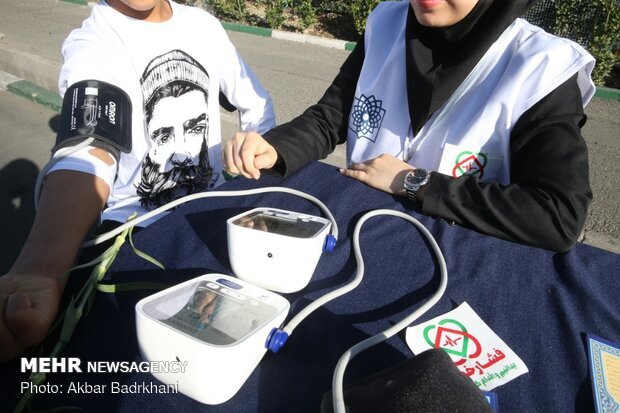Iran highly efficient in hypertension control: study

TEHRAN – A study by Iranian researchers shows that expanding universal health coverage (UHC) and strengthening primary care has been significantly effective in treatment and blood pressure control in some middle-income countries, including Iran, over the past three decades.
The results of this international study, conducted in collaboration with professors and researchers at the Endocrinology and Metabolism Institute of Tehran University of Medical Sciences and published in The Lancet, provide the first comparable estimates of the prevalence, diagnosis, treatment, and control of hypertension.
It analyzed blood pressure measurements in more than 100 million adults in 184 countries, including Iran, over the past three decades, IRNA reported on Friday.
Based on the findings of this study, progress in the diagnosis, treatment, and control of hypertension has varied greatly between countries. Some middle-income countries currently outperform most high-income countries.
A dual approach to reducing the prevalence of hypertension through primary prevention as well as improving treatment and control is possible not only in high-income countries but also in low- and middle-income countries.
The study acknowledges that over the past 30 years, the number of adults (79-30 years old) with high blood pressure worldwide has doubled, increasing from 331 million women and 317 million men in 1990 to 626 million women and 652 million men in 2019; and a significant part of this upward trend has occurred in low- and middle-income countries.
Over the past 3 decades, the number of adults with hypertension has doubled worldwide. Despite simple diagnoses and relatively easy treatment with inexpensive medicine, almost half of people with high blood pressure (41% of women and 51% of men) worldwide were unaware of their condition in 2019, and more than half of women and about 60 percent of men with the disease have not been treated.
Worldwide, one in four women and one in five men with high blood pressure have been able to control their disease by following treatment and lifestyle modifications, according to the study.
The researchers believe that significant advances in the treatment and control of hypertension in some middle-income countries, including Costa Rica, Kazakhstan, South Africa, Brazil, Turkey, and Iran, over the past three decades show the expansion of universal health coverage and strengthening primary health care.
According to the study, high blood pressure is directly linked to more than 8.5 million deaths annually worldwide and is a major cause of stroke, ischemic heart disease, other vascular diseases, and kidney failure. Lowering blood pressure can reduce strokes by 35 to 40 percent, heart attacks by 20 to 25 percent, and heart failure by about 50 percent.
Despite advances in medication and treatment over the past few decades, global progress in managing blood pressure has been slow and the vast majority of people with high blood pressure remain untreated.
The findings suggest that if international advocates and governments are committed to addressing this major cause of morbidity and mortality, preventing high blood pressure and improving its diagnosis, treatment, and control in low- and middle-income areas is possible.
So that, reducing salt consumption and increasing consumption of fruits and vegetables, along with improving diagnosis by expanding universal coverage of health and primary care and ensuring access to effective medicine to reduce the growing epidemic of hypertension in low-income countries are among the policies that should be followed.
300,000 Iranians die of NCDs annually
In February 2019, the health ministry announced that some 300,000 Iranians die of NCDs annually in Iran, which means that one-fourth of the country’s population (standing at 80 million) are overweight or obese which also results in developing NCDs.
Diabetes, a non-communicable disease, is a serious threat to people’s health and is the fifth leading cause of death in the country. Diabetes prevalence is 10 percent in Iran and is high among people aging 50 or more.
Cardiovascular diseases (mainly heart disease and stroke), which were the leading cause of death in 2012, diabetes, musculoskeletal disorders (especially osteoarthritis – a highly disabling degenerative disease of the joints), and some cancers (including endometrial, breast, ovarian, prostate, liver, gallbladder, kidney, and colon) are common health consequences of overweight and obesity, WHO warns.
Having too much sugar in the blood for long periods of time can contribute to serious health problems if it's not treated. Hyperglycemia can damage the vessels that supply blood to vital organs, which can increase the risk of heart disease and stroke, kidney disease, vision problems, and nerve problems.
Moreover, 30 percent of men and 36 percent of women aged 25 to 64 years also have high cholesterol due to overweight and obesity, consuming fast food, and insufficient physical activity.
FB/MG
